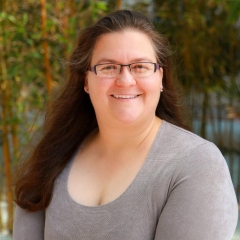Tara Ahi
Staff Writer
Photo courtesy of UCSB Mechanical Engineering
University of California, Santa Barbara mechanical engineering professor Megan Valentine has been selected for the prestigious Fulbright Scholar Award. This grant will allow her to take a sabbatical to France, where she will work with materials scientist Costantino Creton, a research director at The City of Paris Industrial Physics and Chemistry Higher Education Institution (ESPCI ParisTech). They will spend several months conducting cutting-edge research until her return in January 2016.
“Most of my research focuses on understanding the unique properties of living materials such as cells, which can crawl, repair themselves, and respond to external cues,” Valentine said. “Through this Fulbright award, I will explore how such features can be incorporated into synthetic materials, made of man-made polymers rather than proteins. This research incorporates approaches from engineering, physics, chemistry, biology and material science, and I find the interdisciplinary nature of the work to be really exciting—there is always something new to learn.”
This partnership could pave the way for future collaborations with the Creton Lab, a “world leader” in the design of the materials used for this work. Both scientists have unique insight into the self-healing behavior of these tissues, and their results could have profound implications in the medical field. Valentine hopes to “hijack” the strategies that our biological features use and synthesize materials that can even better complete these tasks over a long period of time. She cites that kind of mechanism has a role in artificial heart valves, vascular grafts, and joint repair. This research appreciates the capabilities of our own bodies and nature’s operations, and hopes to expand upon them in a way for reliable and self-sufficient treatment options.
With recent technological breakthroughs in soft materials research, Valentine describes this as an “exciting time” to be involved in the advancements. There are now more sophisticated tools available to measure what they need to and to approach problems like drug delivery. She focuses on bond breaking and formation, and the energy that results from something like blunt trauma. The example she gives is that of a bike helmet: it protects through controlled collapse of absorptive material to take in the impact energy, rather than our skulls. Bonds have to break for the energy to dissipate. This sets the precedent for the research on healing.
Analyzing the forces that dictate resiliency, toughness and strength of materials on a molecular level is necessary to develop the desired product: “new classes of bio-inspired self-healing materials,” Valentine said. Specifically, she wants to find a way to apply reversible bonding dynamics that allows for bonds to reform after injury or trauma breaks them. This is the underlying “self-healing” feature of the new biomaterials.
This move marks a change both professionally and culturally for Valentine. She will be able to continue running her lab here remotely while living in Paris. She looks forward to focusing on research and mentorship, as well as the scientific and cultural offerings there. One part of the Fulbright mission is to encourage international cooperation and to increase awareness of different cultures. Valentine notes that ESPCI ParisTech has a strong reputation in the recruitment and retention of women in the STEM fields, one of its attractors for her.
“The Fulbright award will allow me to learn more about the institutional resources and cultural influences at play, and I hope to return to UCSB with a better understanding of how the French educational system engages and supports female students, and suggestions for how the U.S. system could be improved,” she said.
Valentine credits influential mentors—men and women alike— in her career for her continued success, as well as learning from rejection or failures and expanding a professional network.
“Ironically, my aim has always been to develop the same personal qualities that I now want to capture in the new materials I create: strength, resiliency, toughness, adaptability,” she said.











